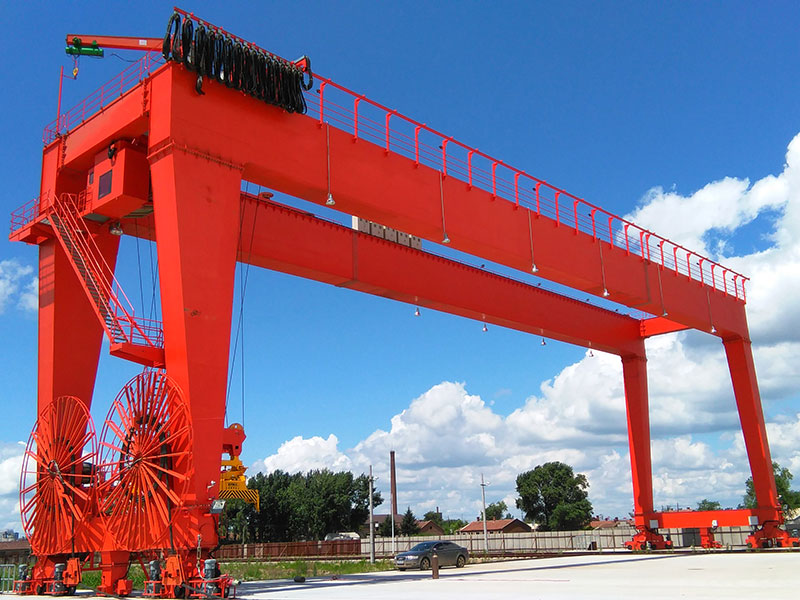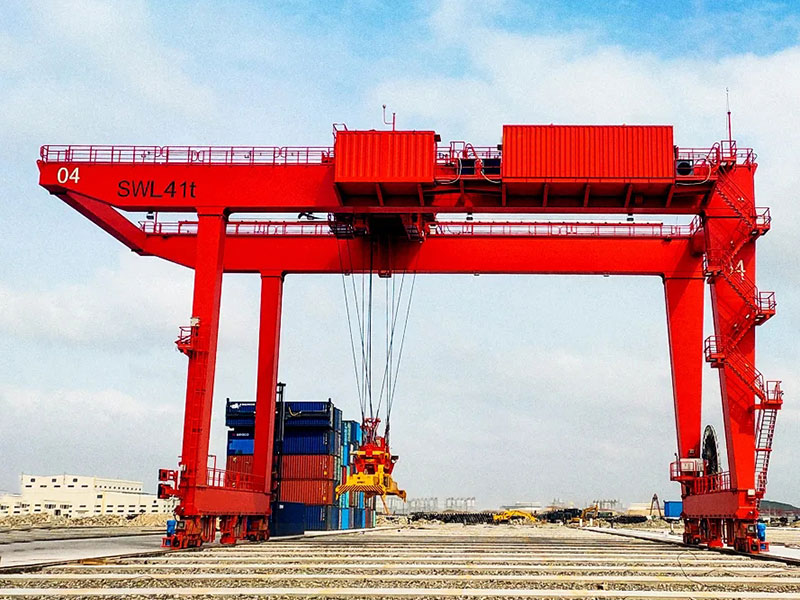Efficient handling of containers in railway operations is vital to ensure the smooth and timely transportation of goods. With the increasing demand for intermodal transportation, the need for efficient lifting and handling solutions in railway container handling has become more prominent. In this article, we will explore the key aspects of efficient container handling and discuss innovative solutions that streamline operations, enhance productivity, and optimize logistics in the railway industry. By embracing these solutions, railway companies can achieve seamless container handling, reduce costs, and improve overall operational efficiency.

Rail-Mounted Gantry Cranes (RMGs)
Rail-mounted gantry cranes (RMGs) are specialized lifting solutions designed to handle containers in railway yards. These rail mounted cranes are mounted on rails and can move along the length of the yard, providing efficient and flexible container handling capabilities. RMGs are equipped with spreader systems that securely grip containers and lift them with precision.
RMGs offer several advantages in railway container handling. They can handle multiple containers simultaneously, significantly reducing loading and unloading times. The ability to travel along the rails allows RMGs to cover a large area, ensuring efficient utilization of space in railway yards. Furthermore, RMGs can handle containers of various sizes and weights, accommodating different types of cargo and increasing operational versatility.

Telescopic Handlers and Reach Stackers
In addition to yard-based operations, efficient handling solutions for railway container handling extend to intermodal terminals. Telescopic handlers and reach stackers are versatile lifting equipment commonly employed in these terminals for loading and unloading containers from railway wagons.
Telescopic handlers are equipped with extendable booms that offer reach and flexibility, enabling them to handle containers in tight spaces. They can lift containers from rail wagons and place them on trucks or vice versa, ensuring smooth intermodal transfers. Reach stackers, on the other hand, are designed specifically for handling containers and have the ability to stack them vertically. These machines can efficiently move and stack containers, optimizing space within the terminal and improving container flow.
The use of telescopic handlers and reach stackers in railway container handling operations enhances efficiency, reduces handling time, and improves the overall logistics process. Their adaptability and versatility contribute to seamless intermodal transfers, enabling the smooth transition of containers between rail and road transportation.
Automated Stacking and Retrieval Systems
Automation plays a pivotal role in efficient railway container handling. Automated stacking and retrieval systems (AS/RS) are revolutionizing container handling operations, providing significant benefits in terms of speed, accuracy, and space optimization. AS/RS utilize advanced robotics and control systems to autonomously stack and retrieve containers in railway yards. These systems eliminate manual labor, reduce human error, and enhance safety.
AS/RS offer precise positioning of containers, optimizing space utilization in railway yards and reducing the risk of damage during handling. These systems can quickly retrieve containers for onward transportation or efficiently stack them in designated areas. By streamlining the container handling process, AS/RS minimize delays, improve workflow efficiency, and enhance the overall productivity of railway container operations.
Conclusion
Efficient lifting and handling solutions are paramount to ensure smooth operations and optimize productivity in railway container handling. Embracing innovative technologies such as automated stacking and retrieval systems (AS/RS) revolutionizes container handling processes, enabling faster and more accurate operations while maximizing space utilization. Rail-mounted container gantry cranes (RMGs) offer flexible container handling capabilities in railway yards, with the ability to handle multiple containers simultaneously, catering to diverse cargo requirements.
For intermodal terminals, the use of telescopic handlers and reach stackers provides efficient loading and unloading of containers from rail wagons, ensuring seamless transfers between rail and road transportation. These machines enhance flexibility and adaptability, contributing to streamlined container flow and improved logistics.
By implementing these efficient lifting and handling solutions, railway companies can significantly enhance their container handling operations. Reduced handling times, optimized space utilization, and improved workflow efficiency lead to cost savings and increased operational productivity. Moreover, these solutions enhance safety, minimize errors, and improve overall customer satisfaction by ensuring the timely and secure transportation of goods.
As the demand for intermodal transportation continues to grow, investing in efficient lifting and handling solutions for railway container handling becomes crucial for staying competitive in the industry and meeting the evolving needs of customers in the global logistics landscape.
